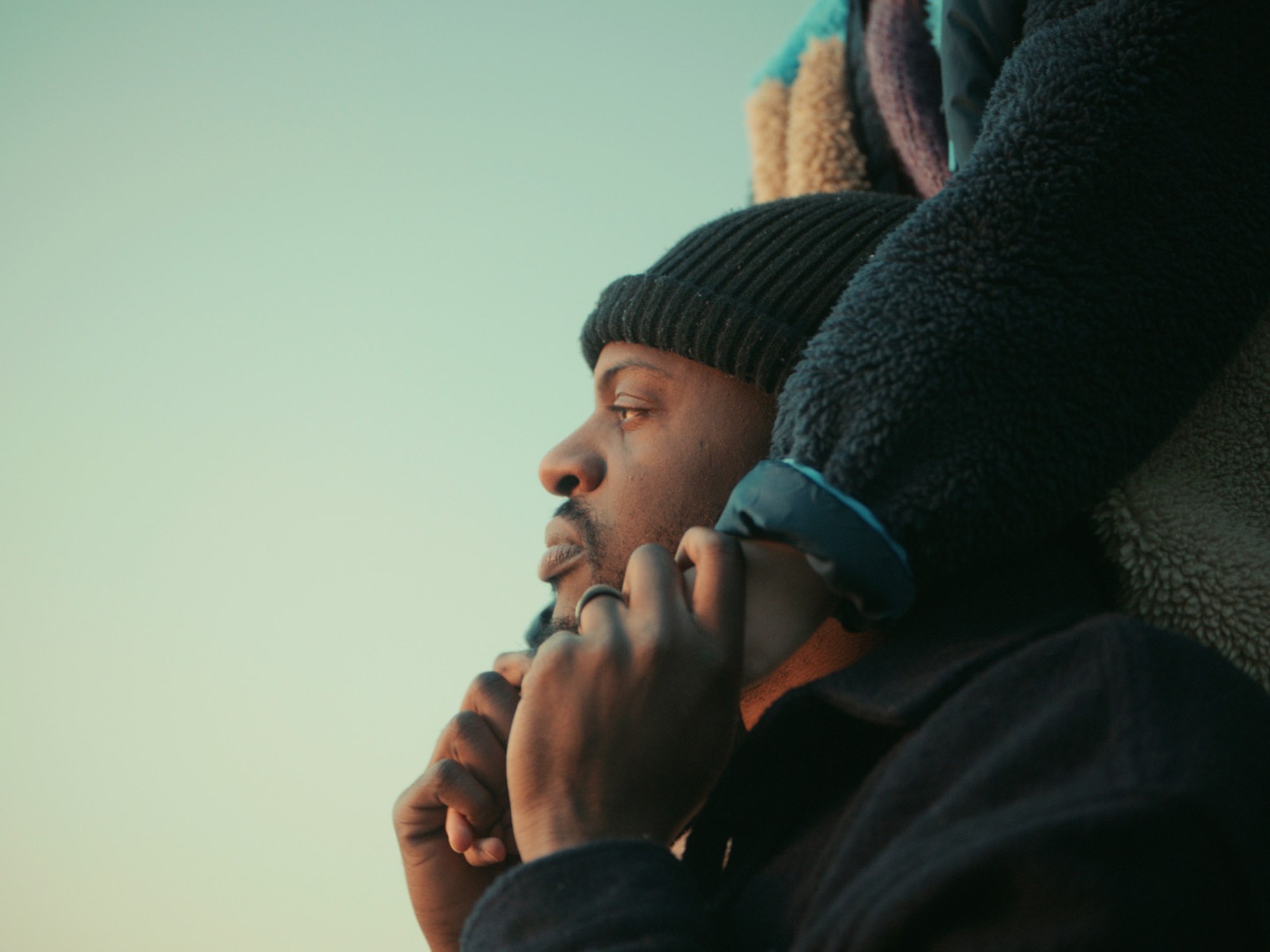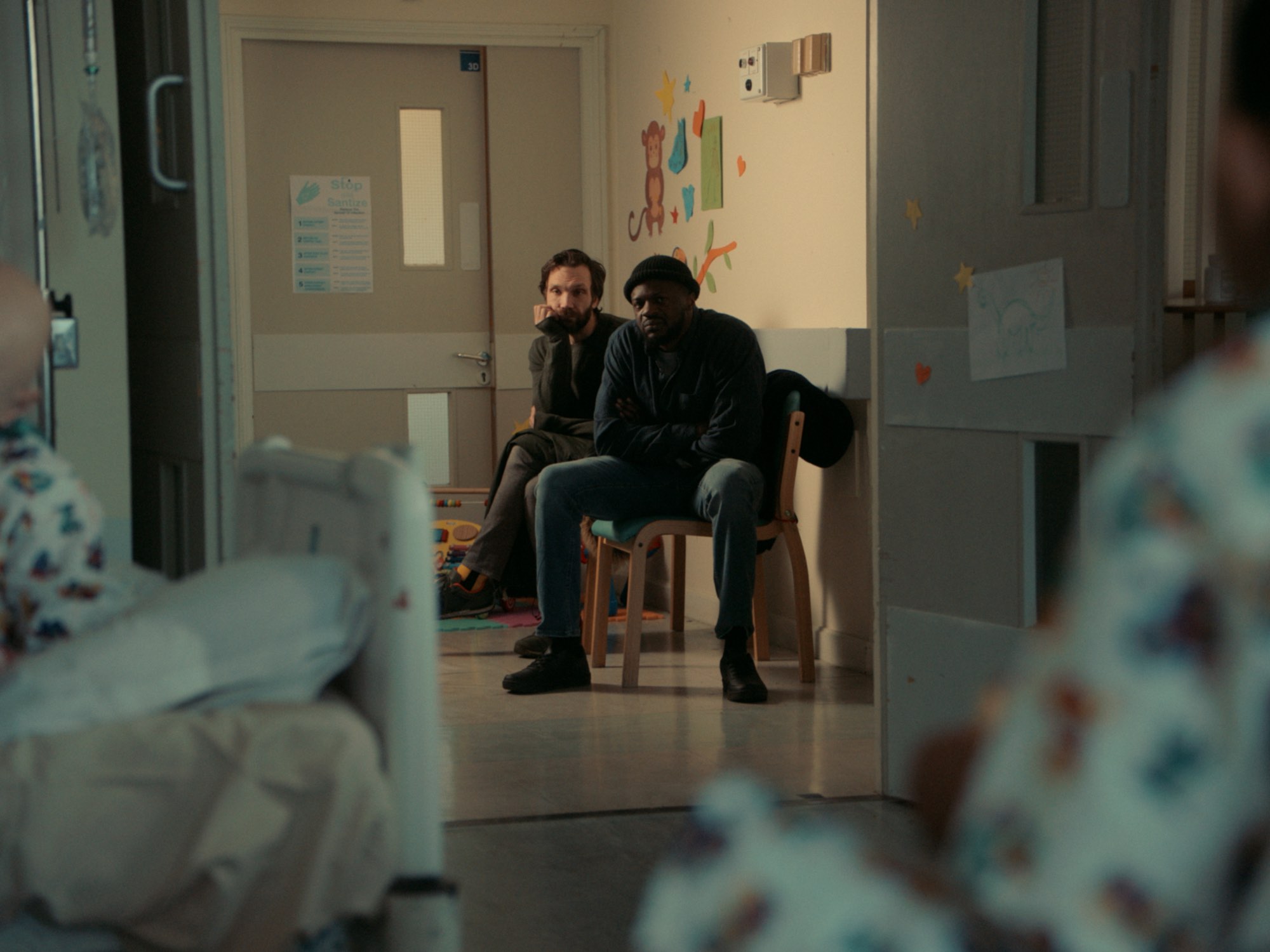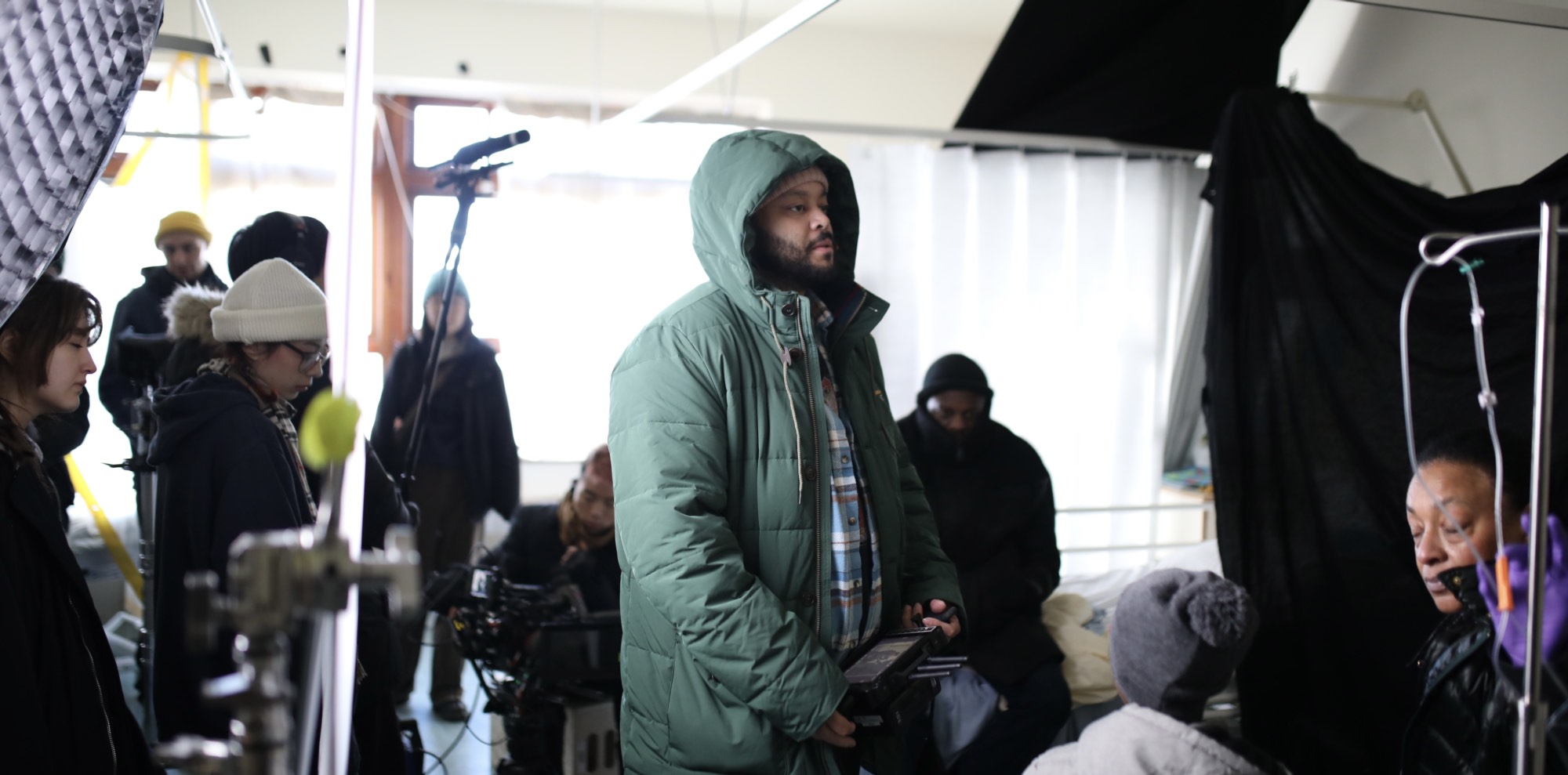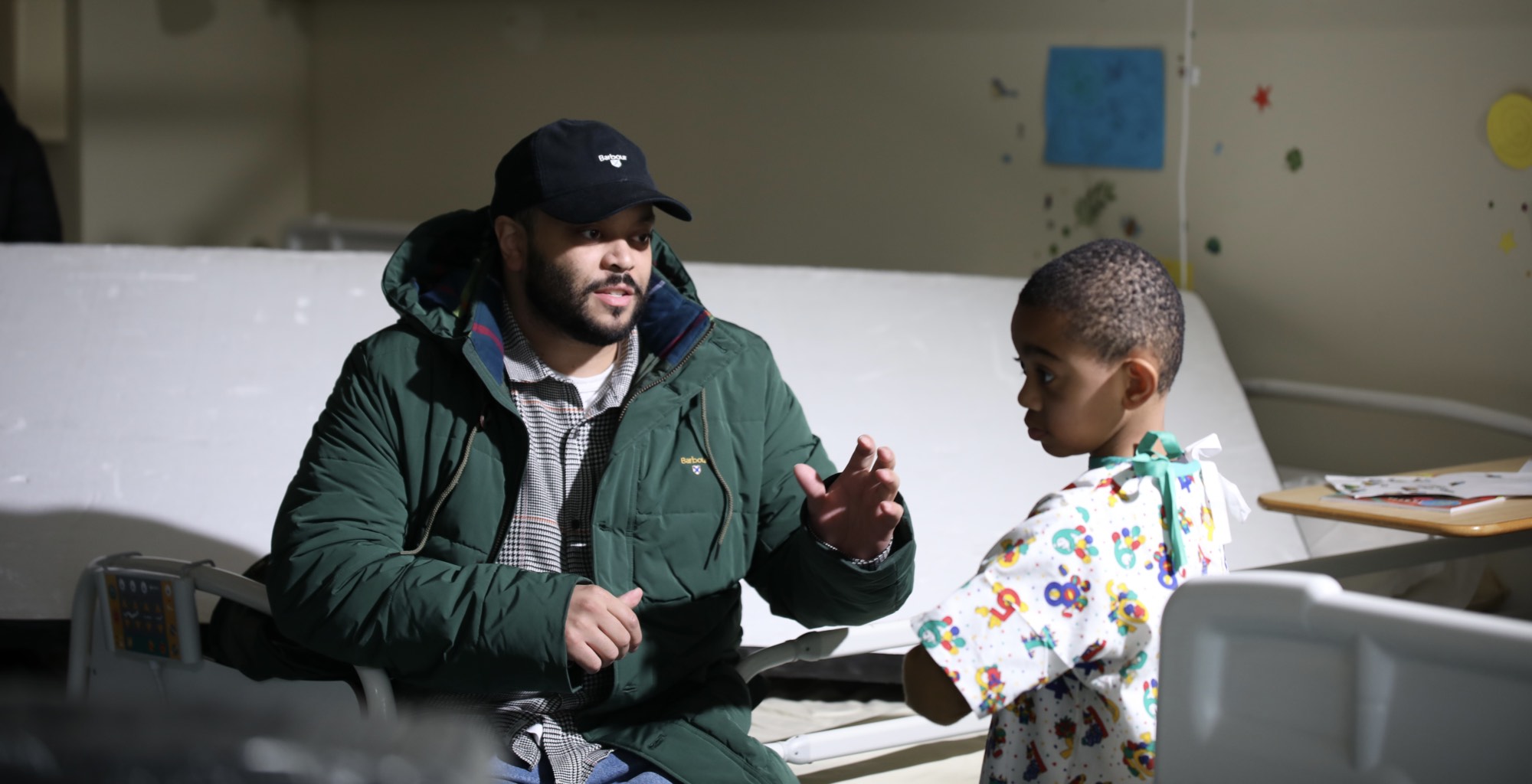
Making art is a personal gamble. To create something worthwhile you often have to dig deep and mine whatever is going on inside yourself in hopes of producing an artistic product which has authenticity. Remi R.M. Moses’ short Saving Art, a hospital-set drama that follows a struggling father who is battling with the guilt he feels offering optimistic lies to his ailing son, is exactly that kind of project, a film born from Moses’ own personal experience in the wake of his five year old niece’s diagnosis with leukaemia. It’s an incredibly brave film to make but it delivers on that artistic gamble, telling a story that is emotionally-challenging but incredibly rewarding and cathartic. DN was delighted to first catch the short at the London Film School’s graduate showcase earlier this year and invited Moses to join us for a conversation amidst the film’s festival run to talk over the personal history of the story, the different gears of direction needed for child and adult actors, and the challenging tonal balancing act of melding a heartfelt drama with a ticking-clock thriller.
Saving Art is a beautifully rendered short about a really challenging emotional situation. Where did the idea for it come from?
I first wrote this film in 2016, a year after my niece was diagnosed with leukaemia at five years old. I remember it being a very dark period of time with a lot of tears. But there was also a lot of hope and happiness that surrounded Kalaila that was so inspiring, it moved all of us so much. Her family set up a private website where the extended family around the world could log into and see photos, videos, and stories about her experience. She gained remission after 30 days and I think the way her family smothered her with joy and kindness contributed to her getting better.
A year later, I began reading up more on how much better survival rates are for children with cancer and how adults go through something akin to ‘pre-grief’. There were forums and stories I’d come across where parents confess to feeling guilty for making up lies and stories to their children because they were scared they would find out the truth. It became like a lingering darkness that would follow them and a lot of people get swallowed up in that darkness, losing sight of how it affects their child. This is also reflected in the scene where Penny’s bed is being stripped down and Arthur is watching in silence. There are no words or explanation and Arthur has to discover and understand this by himself, almost like his dad isn’t equipped to talk about death and grief yet with him.


We first caught the film at The London Film School graduate showcase and were so struck by it. Why was this the story you chose for that moment in your education? And how did it grow through your time at LFS?
When I was nearing the end of my studies at The London Film School, your graduation film was put on a pedestal because it’s important to create something that is almost like your manifesto. I came back to Saving Art and did some heavy redrafts since its six-year inception. We created a crowdfunding campaign and raised £13,000 which helped us make this film with an authentic hospital which was really important to me. We shot the film on an Arri Alexa Mini with an Angenieux 30-90mm zoom lens and a set of Cooke S4/i Primes. The early conversations with my Cinematographer Andy Leung were about the use of shooting on zooms and witnessing drama that felt like we were creeping in and getting closer to the characters. I love shooting parametrically and so we came up with a rule to only shoot off axis when faced with a disruption to the drama or character’s emotion. It’s a small thing but can be an effective and subtle tool for aiding the storytelling.
Were you drawing on any artistic influences during the making of the short?
My first reference in making this film was The Pursuit of Happiness. But then as things started to evolve, I found that the tone was due to be more grounded and a little darker. We started looking at films like Cure by Kurosawa, Biutiful by Iñárritu, and also Tigers Are Not Afraid by Issa López.
I wanted to create a soundscape that was built from the MRI machine in the first couple scenes and wanted to create this feeling that he was taking the heaviness of the hospital home with him.
You mentioned there about the cinematography and tone of the film, what other elements of production did you heavily deliberate over?
The sound design was important for me as well, because we stick with the father’s perspective for the majority of the film. I wanted to create a soundscape that was built from the MRI machine in the first couple scenes and wanted to create this feeling that he was taking the heaviness of the hospital home with him. I used the MRI machine droning three or four times in the film in moments of uncertainty to call back to the initial trauma of finding out his son has a terminal illness. We did build the story into more of a psychological thriller because there was something haunting about a parent expecting death and feeling helpless. But it became too gloomy, and we had to try resurrecting some joy from it.


How long were you in production for and how straightforward was the shoot?
We shot for six days, and it was one of the most relaxed sets I’ve ever been on. I think everyone could feel the magic we were creating and that feeling of importance spread through the crew. It was really tough working with child actors, but we made it through and I had a lot of support from my producers and assistant directors. I think the biggest learning curve was having to almost code-switch between giving notes to the adults and giving notes to the children. It’s really difficult with a big cast but given that the kids were so young, I could get away with quick and simple articulations to make them understand in fewer words as possible.
I think the biggest learning curve was having to almost code-switch between giving notes to the adults and giving notes to the children.
As a graduate filmmaker, how have you found the festival circuit experience with Saving Art?
We’ve had some success on the festival circuit already and are on the home stretch now. The standouts were winning Best Actor at the British Short Film Awards for Michael Salami’s performance as Brian. And also, being programmed in Slamdance 2024 which was life changing.

With the film being based on such a personal, familial experience, what was it like sharing it with your family? How have they reacted to it? I can imagine it would’ve been quite the emotional watch.
It’s been a very emotional year of screenings. Every screening I have, I find that I’m sharing it with new family members who are familiar with what happened and so it’s always very heavy. I had the crazy experience of watching it alongside Kalaila at Slamdance and it was the first time she watched it. She and her mum were crying their eyes out and I guess it was triggering for them. It was just so beautiful to hear their thoughts on how I captured the innocent and haunting moments from their experience in the hospital. It was reassuring to me on a professional level, but also there was something magical about how this piece of cinema transcended time and space. Something that happened eight years ago is now resonating, inspiring and moving people all around the world, and it’s all because of this beautiful little girl and her family who chose love and joy to battle the darkness. I feel very proud of this project for so many reasons.
What does the future hold for you now that you’ve graduated?
I’m currently developing this into a feature film and I’m really excited about the year ahead for Saving Art.


